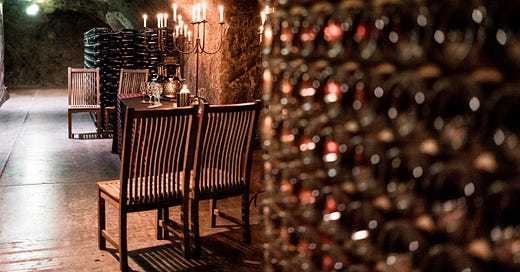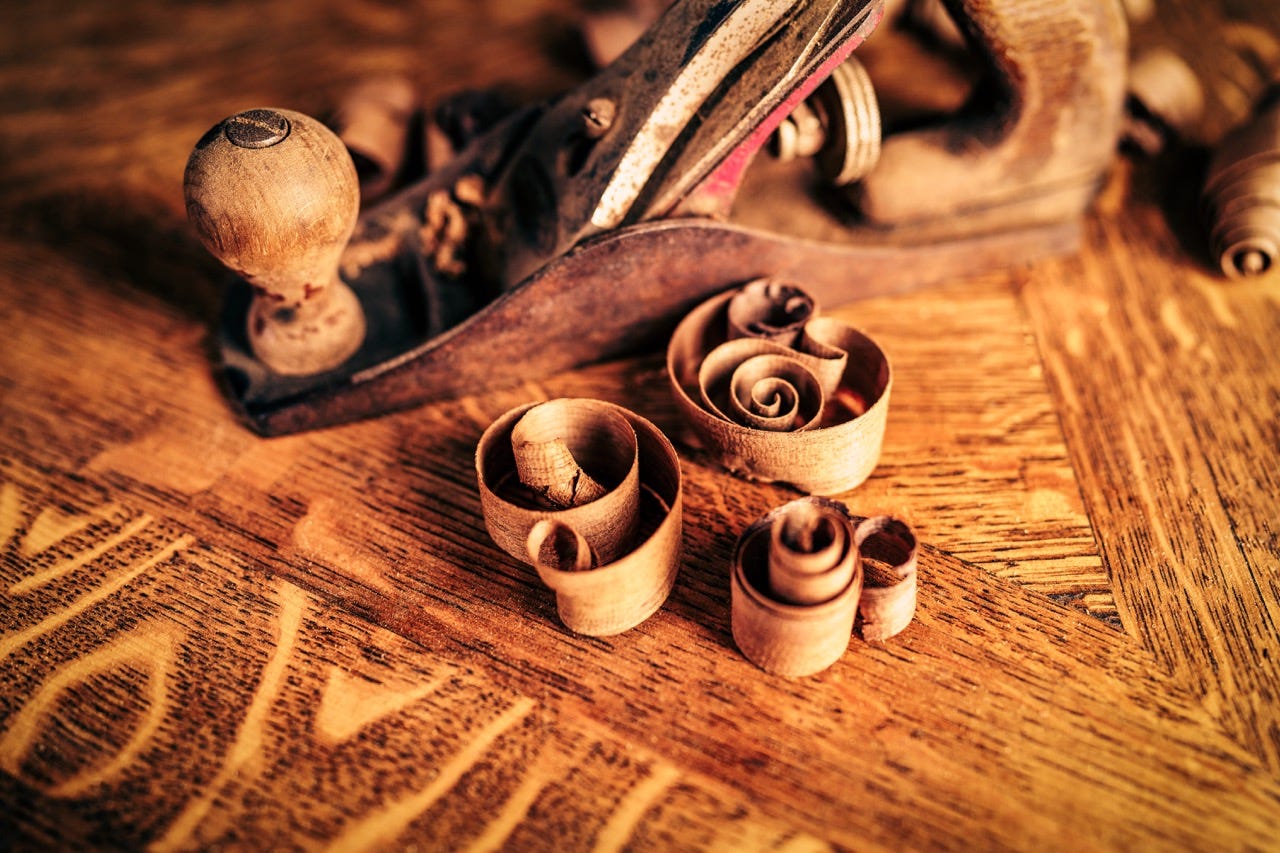NAPA VALLEY, Calif. — If you visited the Napa Valley 40 years ago, chances are you had a chance to visit a winery cave, an experience most visitors anticipated. Caves were a feature of pride. Often the winemaker would lead the way down stone steps into a dimly lighted cavern.
Dank, musty smells indicated that wine had been made here for eons. Cobwebs in the corners were left in place or put there intentionally for the ambience they provided. The host carried enough glasses for the group. The aim of the trek was to try wines from a recent unreleased vintage. Bearing a thief — a tube with holes at both ends — the host sought a barrel in a remote corner.
The thief was plunged into the barrel’s bunghole, wine entered the thief, the host placed a thumb over the top hole in the thief so wine couldn’t flow out the other end, then drizzled wine for the eagerly waiting tasters. There, in dim light on a wet floor littered with giant hoses, with fruit flies buzzing around, a nearby pump creating a racket competing with a tinny radio and the ambient smells of still-fermenting wine, the guests sniffed.
All expected to smell and sip this unformed stuff and gain some insight relating to either the vineyard, the clone from which the liquid was crafted or the yeast strain used to ferment it. And then they were expected to expectorate the wine into a nearby floor trough.
I experienced this fragment of performance art dozens of times in the 1970s and 1980s. Did I ever understand the first thing about what I was smelling and tasting? Almost never. The only person who could regularly make sense out of this kind of experience was the winemaker who nursed the grapes through harvest months, who was there when the grapes were picked and crushed, and then agonized through the fermentation and aging processes.
It was he or she who experienced all the difficulties through which wine was subjected. In days of yore, the cask of wine selected to illustrate one point or another was intended to display a great example of how and why this wine was so magical. Visitors often were awed but rarely enlightened.
At the time, cave tours might have been free. But not always. At one point I paid the munificent sum of $10 to do a cave tasting. (It probably needs not be said that fees have risen a tad.)
Today one way to arrange a cave visit is to pay for a “private tour” of an exalted winery by winning a highly promoted lot at a charity wine auction. Or arrange one yourself. Most wineries with caves that offers tours now charge a lot for this literally cool experience.
The fact is, tasting from barrels in a cellar is kind of pointless for non-professionals. For one thing, what you are offered is not even wine yet. Basically, it’s alcoholic grape juice. Wine is a living product. It requires a lot of time to become what it is intended to be. And until a winemaker makes the final decisions as to which components are to be used in the final blend – the one that will be bottled – the out-of-barrel liquid has nothing to do with what it will be.
Also, wines still in the barrel usually contain trace amounts of elements that winemakers know are spoilage but which will be eliminated later in the process.
Today’s tasting-room sampling sessions are much saner and far more sanitary. And a lot more sybaritic. They tend to emulate how professionals in the wine trade evaluate young wines prior to release.
In Bordeaux, early each year professionals participate in a tasting of last year’s classified growths in pre-release events. They do not do so in caves. Barrel samples (still not the final wine) are assembled and served in proper stemware in quiet drawing rooms away from leaky hoses, 15-watt bulbs and fruit-fly swarms.
Evaluations by trade and critics are more formalized. Conditions are appropriate to the proper evaluation of the samples. But what of the samples themselves? It’s well known that some (most?) chateau owners fear putting a wine out for experts that is aberrational. Very early in their lives such wines can be a real nightmare.
So there has always been speculation that some houses “assemble” a wine chosen from various samples that maximizes what the house could do if it were going to make, say, 400 cases of wine. This particular sample, then, does not really represent what the final product (thousands of cases) eventually turns out to be. This is the dirty little secret that everyone ignores.
In the 1990s, speculation was rife that there was a phenomenon in Bordeaux and California called something like the “Porker Barrel.” This may well be a myth. It was supposedly a special barrel set aside for writers who visited the property and wanted to try the still-aging wine. According to the rumor, special barrels would be chalk-marked for visiting wine critics.
Is this an apocryphal story? Did such a barrel really exist? If so, how many producers had such a thing? It may have only been a rumor.
In 1992, I experienced something interesting that relates to this. I was visiting Bordeaux. One morning I was escorted to Chateau Ausone by a well-known Bordeaux merchant who represented Diageo Chateau & Estates. My guide lived in Bordeaux and knew he did not have to call ahead for an appointment. We arrived unannounced and walked into the cave.
The C&E representative greeted the winemaker and introduced me by name but not by affiliation. (I was the Los Angeles Times wine columnist at the time.)
The Ausone winemaker had been sampling some of his barrels. Soon after we arrived, he obtained two more glasses and gave us samples from the barrel he was thiefing. I liked it but thought it a bit awkward. No big deal. A Bordeaux that young taken out of the barrel probably ought to be awkward. It’s the nature of Bordeaux. We chatted about it for a while before the C&E rep told the winemaker that I was with the L.A. Times.
At which point the winemaker flinched and asked me to dump out the first sample and try another barrel of the same wine. The C&E rep just laughed and said, “He doesn’t write about barrel samples.” To which the winemaker breathed a sigh of relief, laughed, clapped me on the shoulder, and said something like, “Good for you! Good for you!”
I’m not a good candidate to try to assess wines that are still residing in barrels. What I look for in a wine that’s still in the barrel has almost nothing to do with how good it tastes at that stage. I look for varietal correctness and balance. And maybe a couple of other esoteric things. Except for rare instances, I stopped doing barrel sampling more than 30 years ago.
But if a casual wine-lover does a barrel tasting and finds a sample to be a bit odd, most wineries have an explanation for the difference between what the sample tasted like and the newly released, ready-to-be-sold wine: “Well, the barrel sample is still developing. It just needs a few months or years, and then it will be fabulous.” OK, thanks. I got it And I’m also ready to buy land in the everglades.
If professional wine-tasters evaluate barrel samples from the same properties year after year and know what they’re looking for, they can glean much from pre-release events. I cannot so I don’t try.
Regular Bordeaux evaluators remind me of when a restaurant critic once told me how he justified dining at new restaurants by telling each owner when he would arrive and even who he was when he got there.
“If they know I’m reviewing,” he said, “they’ll put out the best food they can that conforms to the menu. If I do this at every place I review, then I’ll know how good each place can be.” Similarly, if the assembled wine samples are the best the wineries could do in a particular vintage and some samples are still not great, then they deserve to be panned.
But isn’t that inviting shenanigans?
I have long known that there are many pitfalls in tasting pre-bottling samples. The worst aspect of this is: What specifically will the winery do to the wine after the pre-bottling evaluation? Does the wine get fined or filtered inexpertly? Will it be aged too long or too little in oak barrels? After a pre-bottling event, all wines still have numerous hurdles to face.
Each house tries to adhere to a house style. Any deviation that is aimed at simply wowing critics should be seen as an aberration. It’s possible that a pre-bottling sample and the bottled wine bear only a faintly tangential connection to one another.
Wine results when grape juice goes through a magical and complicated transmogrification. Between the vineyard’s soil and our home wine cellars, each experience we have with wine is but a snapshot, an instant in time. A sip of a single barrel can’t have much meaningful impact on strangers wandering in gloomy caves. Most visitors are as affected by the dank venue as they are by the embryonic liquid.
Wine Discovery: 2023 Matthiasson Vermentino, Los Carneros, Cressida Vineyard ($32): There is a delightful floral quality in the aroma of this medium-weight white wine made from a fascinating Italian grape. It reminds me slightly of a more exotic version of pinot gris or grenache blanc but with more interesting fruit. Steve and Jill Matthiasson have captured the varietal precision that this grape offers in a cool climate. They bought the Cressida Vineyard in 2022 because it was facing San Pablo Bay and thus gets marine influences that might be evident in the aroma of this wine. Although it is slightly lush in the mid-palate, terrific acidity and 13% alcohol make this a superior wine to pair with mildly spiced food. From the company’s website: “Our Vermentino has oodles of texture from the shale soil along with zesty acidity from the cool Carneros climate. That interplay is what makes a white wine like this so compelling. Besides the gorgeous texture, you will find notes of ripe orchard fruit, mandarin orange, juicy lemon, along with lifting herbal notes such as tarragon or chervil. All of this is carried by a broad, powerful expression of Vermentino.”
If today’s story captured your interest, explore these related articles:
Dan Berger’s Wine Chronicles: The Evolution and Art of Winemaking
Dan Berger’s Wine Chronicles: How Wine Is Packaged Can Affect Its Quality
Dan Berger's Wine Chronicles: Aged Red Wines Are Still 'Fine'
Wine in Crisis: Navigating Prohibitionist Waves and Market Shifts
Dan Berger's wine chronicles: The evolution of wine in a warming world
Dan Berger has been writing about wine since 1975.









I well recall visiting wineries in Bordeaux in 1973 with my husband and three young children. We were living in France at the time. Each winery visit included arriving at a home without fancy signs outside. Vineyards outside. We knocked on the various front doors and were invited to descend to basement spaces. There, the winemaker (always a gentleman) poured wine into glasses and offered water to the children. We spoke French and compared notes about the vintages. Usually we purchased a bottle or two of wine. Simple, friendly experiences…. Quite different from today’s tastings.